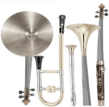7.1 Segment analysis and orchestration strategies
An orchestra can be used in many different ways, but most often, the manner in which an orchestra is employed is characterized by a strategy, an approach to orchestration that is maintained throughout the entire composition—and, for many composers, throughout their entire body of work. In the following, three of the six selected orchestral movements that constitute the core material of this book are analyzed using segment analysis to identify the strategies that characterize each of the movements.
7.2 Ravel: An orchestrated interpretation
Like most of Ravel’s orchestral works, Rapsodie Espagnole was originally composed for the piano (in this case, actually for two pianos) before it was orchestrated by the composer himself. In the segment analysis depicted in Figure 69, these two versions are shown side-by-side.
7.2.1 Added articulation and colorful effects
The orchestrated excerpt is divided into three segments, with the corresponding part of the piano score notated on a smaller staff directly below each segment. The comparison exposes Ravel’s preference for adding orchestrated dynamics and articulations as well as layers of colorful effects that were not present in the original version.
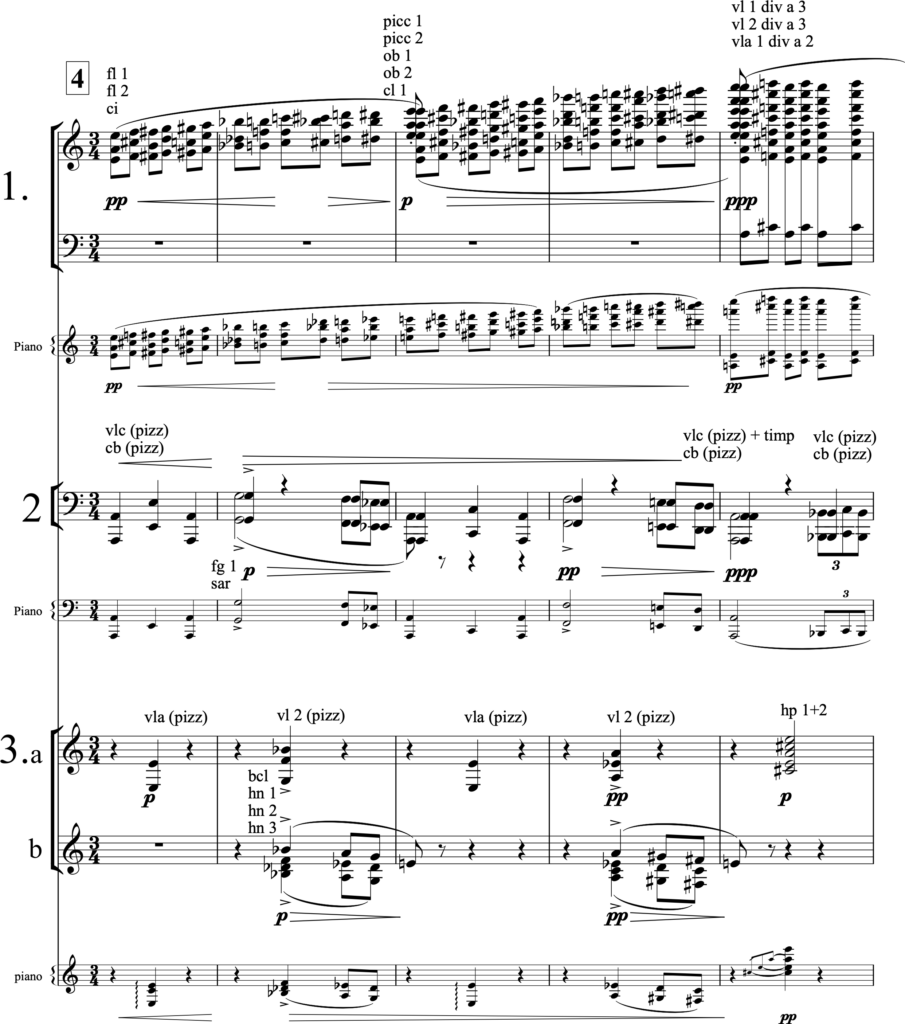
Figure 69. Segment analysis of Ravel’s Rapsodie Espagnole, 2nd movement, with the corresponding parts of the original piano version on the small staff below.
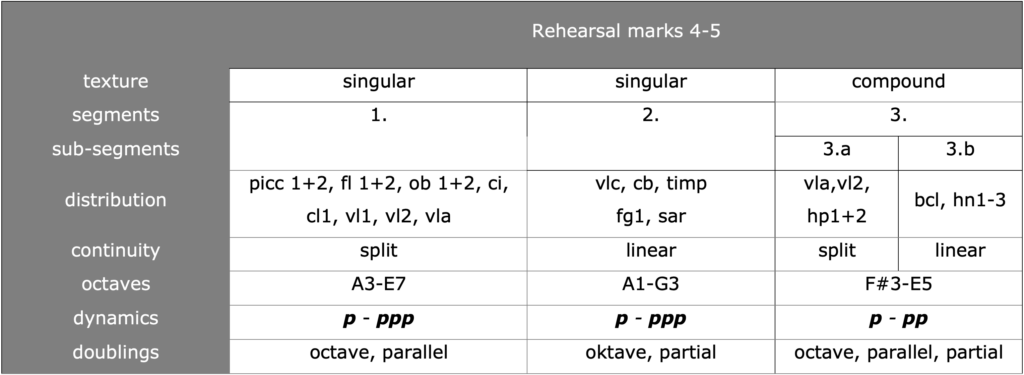
Figure 70. Segment analysis of Ravel’ Rapsodie Espagnole, 2nd movement, Rehearsal marks 4-5.
In the orchestration, several octave doublings have been added to segment 1 to eliminate the gap down to the accompaniment, as in the piano version. In addition, split orchestration is utilized.
Segment 2 features a more colorful articulation than in the original, combining pizzicato in strings with partially doubled legato in the winds. In addition, the timpani’s single, punctual doubling marks the place where the ostinato is shortened to a single measure.
Again, in segment 3, a partial doubling is used between strings and winds, which, as in segment 2, combines pizzicato in the strings with legato in the winds (horns 1-3 and the bass clarinet). The chords in segment 3 are also fuller in the orchestral version to obtain a better balance with the many doublings in segment 1. Also in segment 3, a very discreet change from strings pizzicato to harp occurs (coordinated with the shift from winds to strings in segment 1).
Overall, the orchestration displays a high amount of orchestrated articulation and rafined change in color on each of the three segment, that puts great demands on the listener who wants to hear “the whole thing”. Especially the split orchestration in 3a is a very discreet sonorous and topographical effect in relation to the surroundings. Also it might be more easy to hear 2.b and 3.b as a doubling of each other, than as part of two different segments.
7.2.2 Rapid change in the distribution and complex blends
Another characteristic that can be partially traced in the analysis above, is the preference for combining very different instruments into complex blends combined with a rapid change in the instrument distribution (Figure 71).
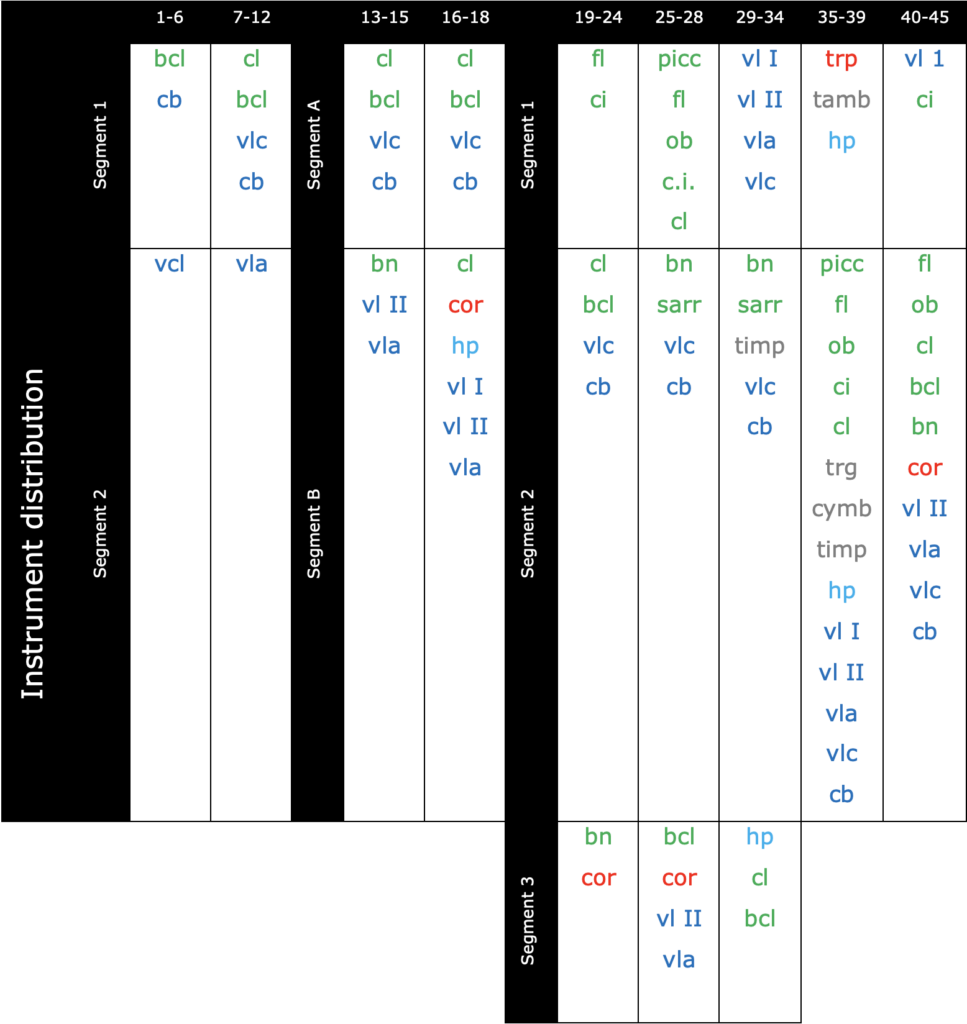
Figure 71. Instrument groupings in Ravel’s Rapsodie Espagnole, 2nd movement, mm. 1-45.
In Figure 71 the distribution change 9 times within 45 bars, leaving an average of 5 bar pr. distribution. An extreme example of a complex blend in found in mm. 35-39, for a segment analysis see Figure 72-73. Here the 1st trumpet, playing f with all its powerful and folksy associations, dominates the music. It is doubled by the tambourine (p), with a little contour doubling by the harp (f). These doublings are very unusual as the similarities between the three instruments are few. The mixture of pizzicato strings, staccato winds, and percussion (tgl, cymb and timb), which gives rise to the cluster-like chords in different spacings in segment 2, are maybe somewhat less unconventional, but still quite complex.
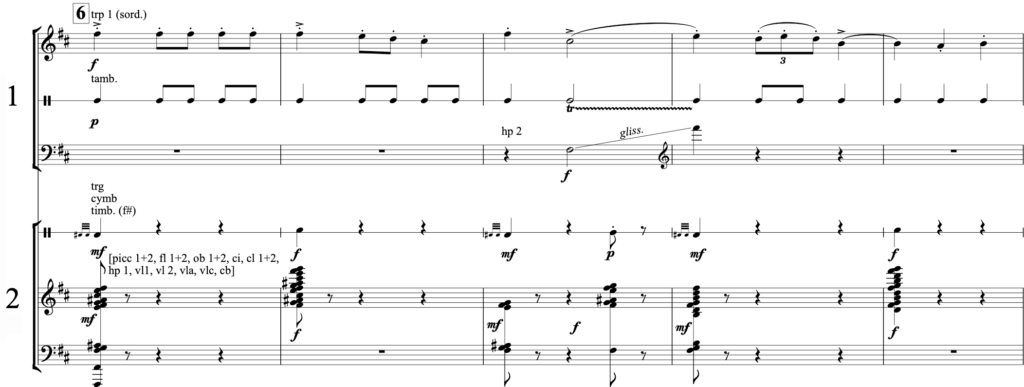
Figure 72. A segment analysis of Ravel’s Rapsodie Espagnole, 2nd movement, mm. 35-39 (Rehearsal mark 6), showing complex instrument groupings.
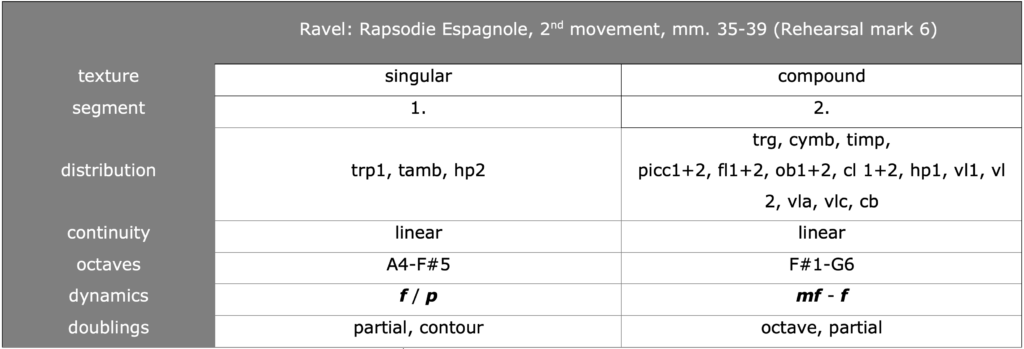
Figure 73. Segment analysis of Ravel’s Rapsodie Espagnole, 2nd movement, Rehearsal mark 6.
The repetition of the trumpets melody, in which it is handed over to the violins, exemplifies one of many radical shifts in the distribution (Figures 74-75). Taken over by the violins in a somewhat slower tempo and with added portamento, the melody transforms into a dreamy and nostalgic expression. The difference between the trumpet and the 1st violins is like night and day, and it adds change in timbre and character that goes far beyond the piano version. Also, notice the rather complex split orchestration of a chordal texture in the accompaniment.
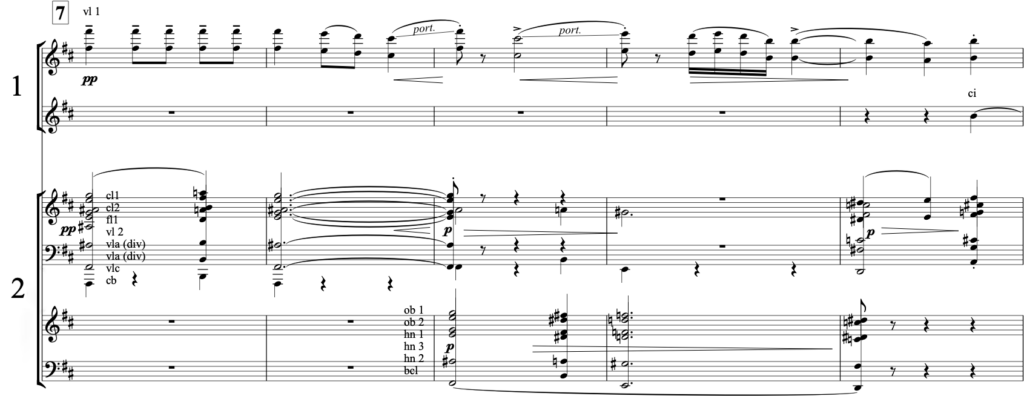
Figure 74. Segment analysis of Ravel’s Rapsodie Espagnole, 2nd movement, Rehearsal mark 7.

Figure 75. Segment analysis of Ravel’s Rapsodie Espagnole, 2nd movement, Rehearsal mark 7. Segment 1 is in split orchestration since the melody is taken over by the cor anglais right where this excerpt is cut off.
7.2.3 Contrasting strategy
As a counterpoint to this, the orchestration of the ostinato is, allhough refined in its orchestrated articulation, almost static. The staccato part is consistently left to the cello and/or double bass in pizzicato, while the legato part is played by the (bass) clarinet, bassoon, and/or sarrusophone. This minimum of variation in th ostinato enhances the experience of variation in the others
7.2.4 Summary
In summary, Ravel’s Rapsodie Espagnole is music governed by radical, high-speed shifts in instrument groupings, a proclivity for combining instruments that rather coexist than merge, and a preference for complex orchestration methods such as partial doubling, split orchestration, and registral doubling (also see Figures 50-51).
Ravel’s orchestration might be seen as a transformative interpretation of the original piano version adding new characteristics to the music, through orcestrated articulation, dynamics, accents, etc.1 Hereby, the music achieves a sonorous complexity and virtuosity not found in the original. If the rich orchestration were to be transcribed back to the piano, the original piano version would appear as a tame simplification.
7.3 Lutoslawski: Orchestration as composition
The 3rd movement of Lutoslawski’s Livre pour orchestre is full of non-traditional textural types that can only be characterized as singular and compound elements. It is a type of music that is identified by its contour, articulation, and timbre more so than by its actual notes.
7.3.1 The triangular motif
The triangular motif, which occurs in several different designs and whose identity is not related to a specific interval or rhythm structure provides an apt example of this (Figure 76).
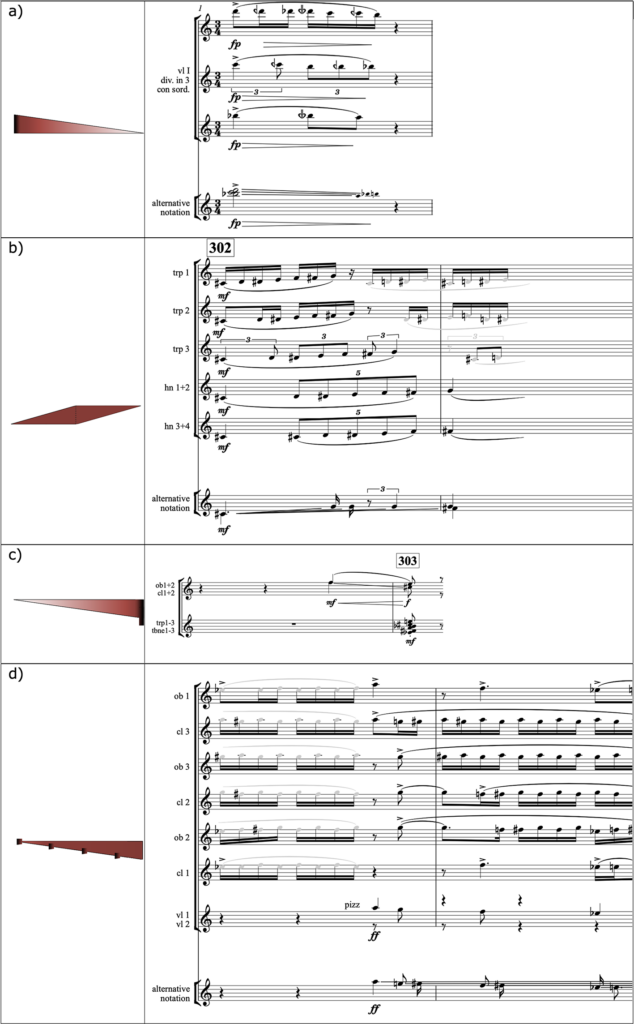
Figure 76. Occurrences of the triangular motif in Lutoslawski’s Livre pour orchestre, 3rd movement.
The core element of the triangular motif is rising or falling motion expressed via glissando or (quarter-tone) chromaticism. This motion is found in the individual instruments in Figure 76a-c and between the instruments in Figure 76d (see the accents). The excerpts in Figure 76 use orchestration methods such as doubling by contour (a-c), partial doubling (c-d) and split orchestration (d).
Looking at the first excerpt in the context of the opening of the movement shows the use of all three orchestration methods (Figure 77).
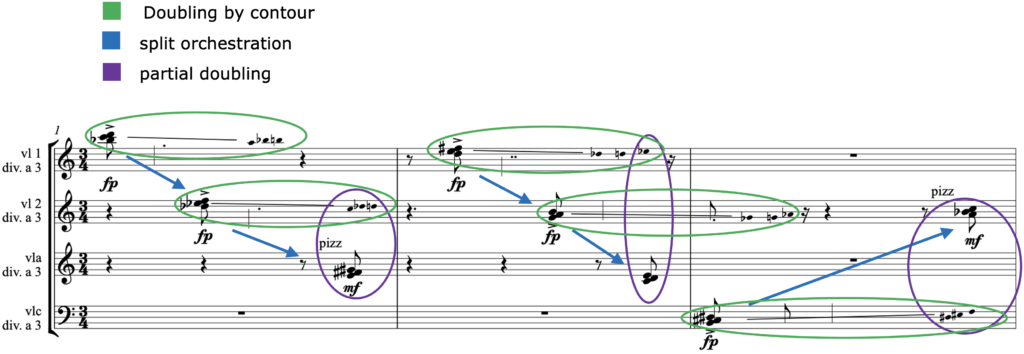
Figure 77. Use of doubling by contour, partial doubling, and split orchestration in Lutoslawski’s Livre pour orchestre, 3rd movement, opening.
7.3.2 In pair of two
Another characteristic feature, already evident in Figures 76-77, is that each instrument is accompanied by at least one other instrument, with the (humorous) exception of the tomtom in rehearsal number 311. Each instrument is accompanied by at least one other instrument that behaves in a comparable but never identical manner. This idea unfolds in many other ways than demonstrated in the examples above. Here are a few additional examples where comparable is interpreted as parallel sevenths (Figure 78), a chain of heterophonic duets (Figure 79), and partial doublings (Figure 80).
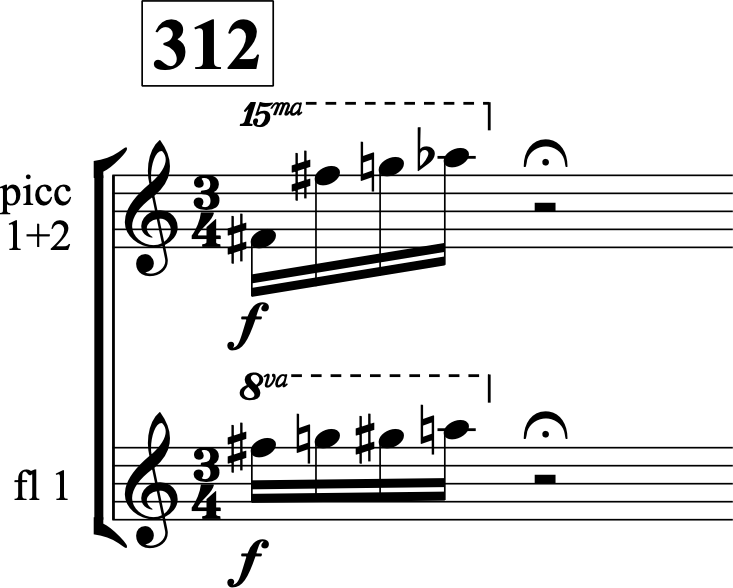
Figure 78. Parallel sevenths in Lutoslawski’s Livre pour orchestre, 3rd movement, excerpt.
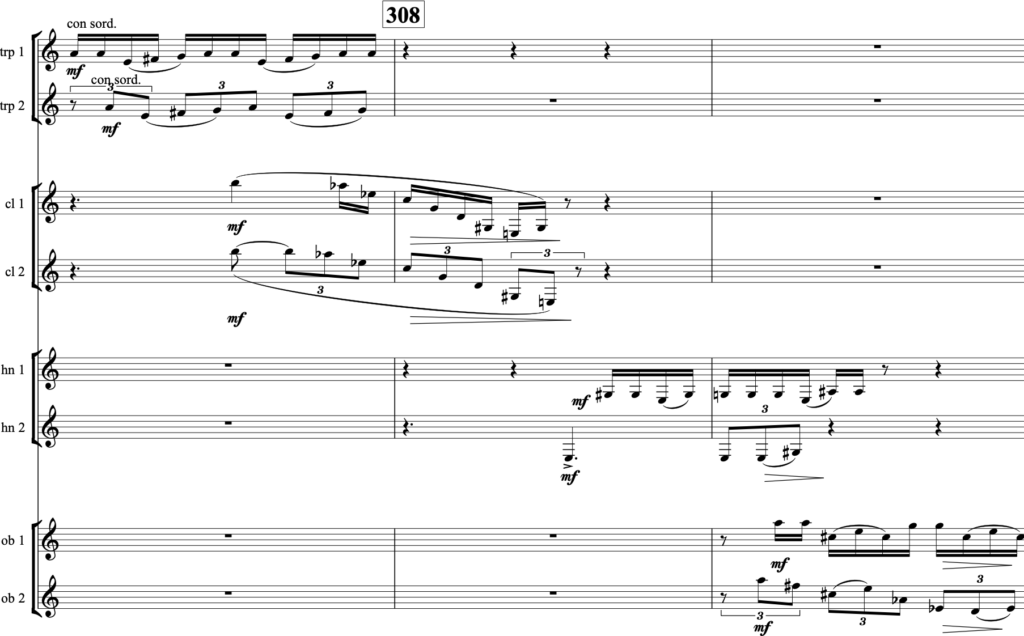
Figure 79. A chain of heterophonic duets passed from trumpets, via clarinets, and horns to oboes in Lutoslawski’s Livre pour orchestre, 3rd movement, excerpt.

Figure 80. Partial doubling in Lutoslawski’s Livre pour orchestre, 3rd movement, excerpt.
7.3.3 The distribution of the instrumental resources
A third characteristic is the very sparse use of symphonic resources. At first, only strings play; then the winds are added one by one, joined by hammered and plucked instruments, and finally drums. On first entry, each group of instruments is first presented in isolation.

Figure 81. Sparse use of the symphonic resources in Lutoslawski’s Livre pour orchestre, 3rd movement, the overall presence of instrument groups.
7.3.4 Summary
The musical material in the 3rd movement of Livre pour orchestra is made from the combination of orchestration methods and compositional strategies towards the symphonic resources. In this case, orchestration cannot be meaningfully distinguished from composition. Therefore, in contrast to Ravel, it would be extremely difficult to imagine a piano version of this movement (or of the other movements from this work for that matter). In Livre pour orchestra, orchestration is composition and composition is orchestration.
7.4 Sciarrino: Instruments as material
The 1st movement of Sciarrino’s 4 Adagi might be understood as a soundscape with two primary identities and a set of surroundings or, alternatively, as a meeting between simple and natural elements, such as a recorder, bird-like melodies, and unbalanced outburst, and complex and cultured elements like an orchestra, advanced intonation, and alternative playing technique.
7.4.1 The choice of soloist
The choice of the recorder as a soloist is unusual. Compared to the modern concert flute, the recorder has a plainer timbre. It is an instrument with a limited register and dynamic range, but also one that masters high levels of agility and widespread flexibility in its articulation. These are qualities that are greatly exploited in this music’s melody, which include very dissimilar articulations and rhythms and lots of small (primarily descending) glissandos (Figure 82).

Figure 82. Dissimilar articulations and rhythms together with small, descending glissandos in the recorder part from Sciarrino’s 4 Adagi, 1st movement, excerpt.
The melody resembles an ongoing improvisation or variation, maintaining a consistent mood throughout the movement. The melody are never transferred to any other instruments, but some of its motives affect, for example the flutes and 1st violins, which briefly imitate, participate in, or echo the voice of the recorder.
7.4.2 The horn-bone
In addition to this solo voice, the music is dominated by the very powerful motif played by 4 horns and 3 trombones in partial doubling. The motif consists of loud attacks in stopped horns with a continuation in muted trombone glissandos. Together, the two instruments make up a kind of instrumental chimera, a horn-bone (Figure 83).

Figure 83. An instrumental chimera of horns and trombones in Sciarrino‘s 4 Adagi, 1st movement, excerpt.
The horn-bone consistently plays the opening motif with the same expression, albeit with countless small variations in the actual notes and rhythms. As it was the case with the recorder, the opening motif is not transferred to any other instruments even though it does resonate and echo in some of the other instruments (e.g., m. 10 in the cello, m. 18 in the recorder and m. 70 in the clarinet).
The two instruments, horn-bone and recorder, are in no way in conflict with each other. They appear unaffected by each other although they do possess certain similar musical material. The recorder’s imitation of the opening motif resembles more the mimicry of a bird imitating sounds from its surroundings than a thematic transformation, as typically found in music.
7.4.3 The anonymized instruments in the background
In contrast to these two foreground instruments, those in the musical background remain largely anonymous. This anonymization occurs through four orchestration strategies: 1) avoidance of attack, 2) use of alternative playing techniques, 3) instrument groupings and, finally, 4) fade-ins and fade-outs so that subsegments disappear into each other.
These strategies can be observed in the bassoons, which only contribute to the music with a few selected multiphonics, or in the strings, whose primary material consists of flageolet clusters, glissandos, and tremolos. Figure 84 exemplifies this behavior of the background instruments in the form of a sequence of fade-ins and fade-outs (in sub-segments 2.a-f).
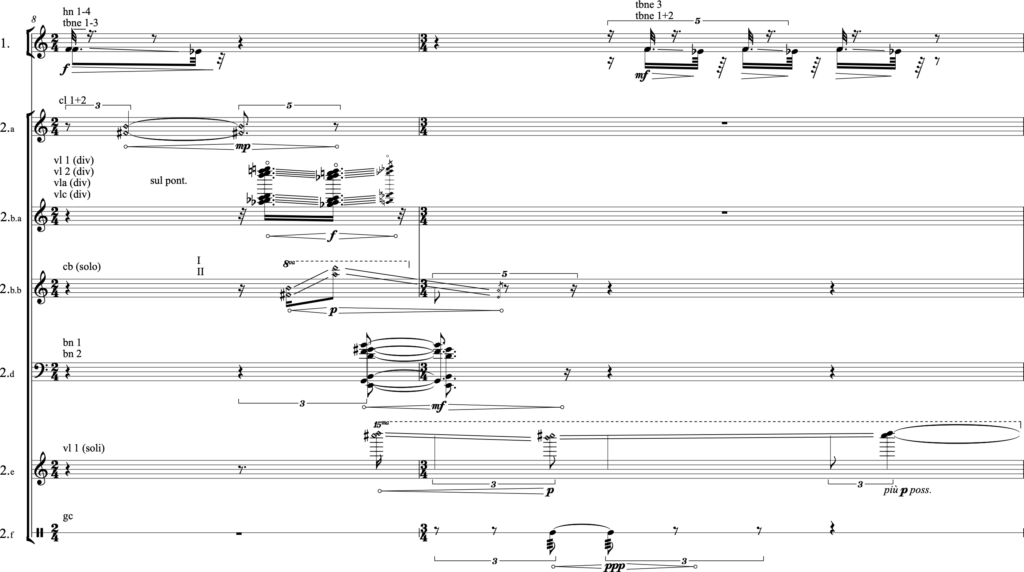
Figure 84. Fade-ins and fade-outs in the background instruments (sub-segments 2.a-f) in Sciarrino’s 4 Adagi, 1st movement.
7.4.4 Summary
The background instruments are limited to a few materials which exposes specific idiomatics if the instruments. For this reason, the musical material can hardly be handed over to other instruments. Thus, the traditional distinction between the musical material and the orchestration ceases to exist. The instruments become the very material that they play, just like the materials become the sounding presence of the instruments they represent. Consequently, this music is short on traditional octave doublings which, otherwise, are used to create connections and balances between, for example, high- and low-pitched segments.
This compositional framing reduces certain instruments to a few sounds while others, particulary the recorder and the horn-bone, contribute to the music in more multifaceted ways.
1) For a discussion about different types of transcriptions see Thom’s The musician as interpreter (2007). –>
